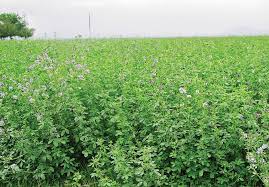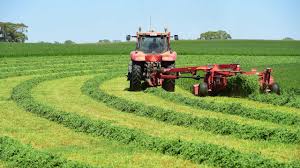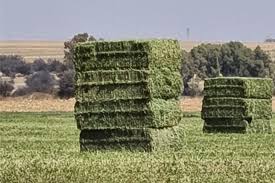How to Start a Successful Lucerne Farming Operation Now?


Lucerne’s extensive root system enables the crop to produce good yields even under relatively dry conditions. Lucerne perennial nature means that once successfully established reliable production could be expected for at least the following 3-4 years.
With a lower cell wall content than grass lucerne is highly digestible and intake tends to be high. Protein and mineral contents are also high making lucerne a valuable alternative forage. It is particularly suitable as a complementary feed when feed alongside maize silage.
Soil Preparation
When lucerne is to be established under irrigation, it is especially desirable to prepare a fine and firm seedbed. As the soil will be irrigated for a number of seasons, well laid out beds save costs and ensure high yields. As efficient weed control is practically impossible in new established lucerne lands, the preparation of the soil must be such that the seedbed is practically weed free at the time of establishment. It must always be kept in mind that lucerne usually remains on the land of a number of years and that good soil preparation before establishment is of the utmost importance because this will eliminate future problems.
Establishment
1. Choose a area that is well drained and spray out to eliminate all weeds.
2. Soil test to determine crop time and nutrient requirements.
3. Cultivate to achieve a fine, even seedbed with no compaction layers.
4. Plant high quality, certified seed.
5. Avoid sowing lucerne seed into dry soils.
6. Plant coated seed and sow at 12 – 18 kg/ha.
Planting Depth
Lucerne is a small seed with a limited supply of stored energy to support the developing seeding. Therefore, correct seeding depth is very important. Placing seed in a moist soil at a uniform relatively shallow depth maximizes germination an emergence.
Plant lucerne no deeper than 25mm with the optimal soil depth ranging from 6-12mm on clay and loam soils and 12-25mm on sand. Lucerne seedlings that do emerge from deeper than 25mm are weaker because of the energy expended during germination. Use the shallow depth for early spring seedlings when moisture is more abundant.
Lucerne Silage
Cutting fresh lucerne at the optimal stage of maturity and feeding it directly to animals year round would supply the highest quality and most palatable feed possible. In addition, field and storage losses would be minimized. However, fluctuations in seasonal growth and plant maturity as well as changing animal feed requirements may make it necessary to harvest and store the lucerne crop to maximize both quality and quantity.
Silage compared to hay:
1. Lower field losses when harvested as silage.
2. Less leaf loss resulting in more nutrients for feeding.
3. Consistent forage quality.
4. Greater ability to harvest the crop at ideal maturity as less rain-free weather is required for silage.
NEED TO KNOW MORE OR NEED HELP WITH A PROFESSIONAL, BANKABLE FARMING BUSINESS PLAN CONTACT US NOW AT:
(27) 84 583 3143 or money@global.co.za FOR A PERSONAL AND PROFESSIONAL SERVICE BY EX BANK MANAGER.


How to Start a Successful Lucerne Farming Operation Now? Read More »